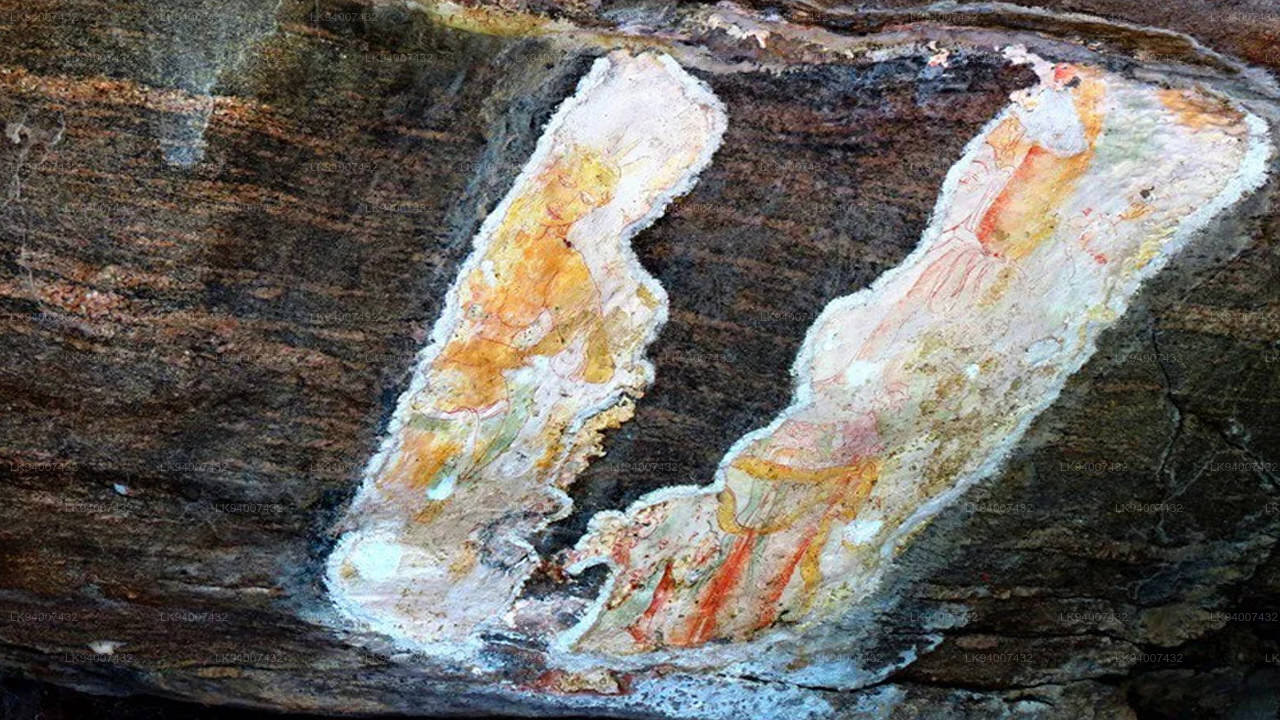
Ampara City
Ampara: District in Sri Lanka's Eastern Province, showcasing diverse landscapes, wildlife sanctuaries, historical sites, and cultural attractions, perfect for exploration and adventure.
Gonagolla Punchi Sigiriya



A set of frescoes identical to the the frescoes of Sigiriya Ancient Fortress lies in a remote temple in Gonagolla. This temple is called Punchi Sigiriya due the frescoes.
This site is in Kotmale Canal Colony in Wewagampattuwa Divisional Secretariat Division of Ampare District. The Kotmale Colony is about 3 miles east of Kohombana Junction on Ampara – Gonagolla Road. Among the rock boulders, there are two small caves which had been adorned with with images of males and females in the ancient past.
Today only two frescoes remain on one of the caves, a female dancer and a man, painted with colours in red, yellow, green and white. The female dancer almost identical to Sigiriya maidens, curved and shapely, her eyes downcast, she clasps her hands together, worshiping the male figure beside her. According to inscriptions on the rocks these frescoes has been dated back to 3rd century. Two more cave in the temple contains rock inscriptions belonging to the 3-4th centuries and 4-5th centuries respectively. In addition to the caves, remains of an ancient stupa, remnents of a watadage and massive stone pillars of what would have been large buildings can be seen scattered around the Gonagolla cave temple.
About Ampara District
Ampara is belongs to the Eastern Province. of Sri Lanka It is a remote city on the East Coast of Sri Lanka, about 360 km from the capital city of Colombo.Ampara is the largest paddy harvesting province in the country, and has the Indian Ocean on the east coast of Sri Lanka as a fisheries resource. Most of the civilians are Sinhala, while Tamils and Moors also live in the coastal parts of the district.
About Eastern Province
The Eastern Province is one of the 9 provinces of Sri Lanka. The provinces have existed since the 19th century but they didn't have any legal status until 1987 when the 13th Amendment to the 1978 Constitution of Sri Lanka established provincial councils. Between 1988 and 2006 the province was temporarily merged with the Northern Provincee to form the North-East Province. The capital of the province is Trincomalee. The Eastern province's population was 1,460,939 in 2007. The province is the most diverse in Sri Lanka, both ethnically and religiously.
Eastern province has an area of 9,996 square kilometers (3,859.5 sq mi).The province is surrounded by the Northern Province to the north, the Bay of Bengal to the east, the Southern Province to the south, and the Uva, Central and North Central provinces to the west. The province's coast is dominated by lagoons, the largest being Batticaloa lagoon, Kokkilai lagoon, Upaar Lagoon and Ullackalie Lagoon.







